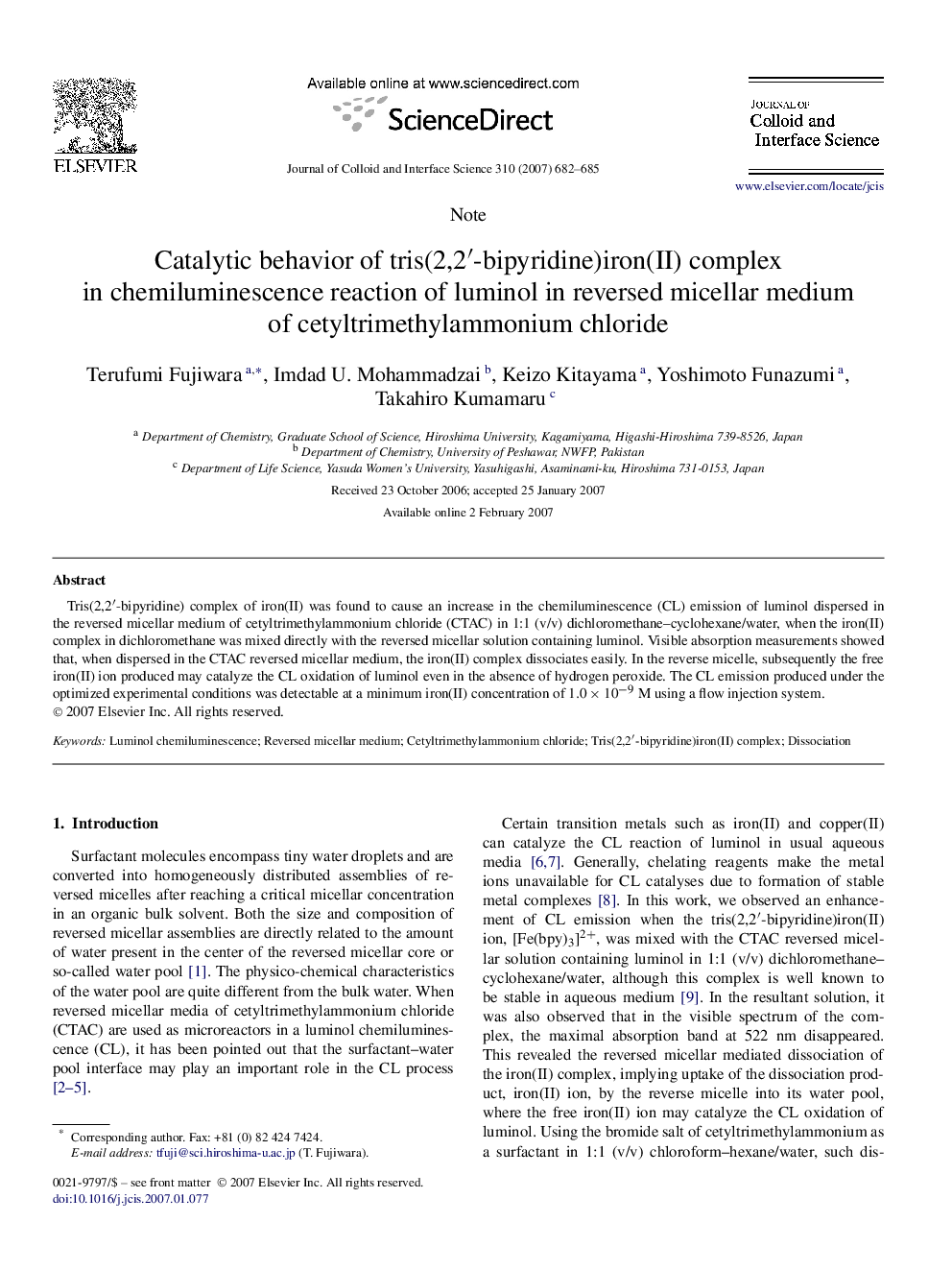| Article ID | Journal | Published Year | Pages | File Type |
|---|---|---|---|---|
| 612460 | Journal of Colloid and Interface Science | 2007 | 4 Pages |
Tris(2,2′-bipyridine) complex of iron(II) was found to cause an increase in the chemiluminescence (CL) emission of luminol dispersed in the reversed micellar medium of cetyltrimethylammonium chloride (CTAC) in 1:1 (v/v) dichloromethane–cyclohexane/water, when the iron(II) complex in dichloromethane was mixed directly with the reversed micellar solution containing luminol. Visible absorption measurements showed that, when dispersed in the CTAC reversed micellar medium, the iron(II) complex dissociates easily. In the reverse micelle, subsequently the free iron(II) ion produced may catalyze the CL oxidation of luminol even in the absence of hydrogen peroxide. The CL emission produced under the optimized experimental conditions was detectable at a minimum iron(II) concentration of 1.0×10−9 M1.0×10−9 M using a flow injection system.
Graphical abstractA unique ability of the [Fe(bpy)3]2+ complex to enhance the luminol chemiluminescence following the dissociation of the complex into the iron(II) ion in the CTAC reverse micelle is demonstrated.Figure optionsDownload full-size imageDownload as PowerPoint slide
